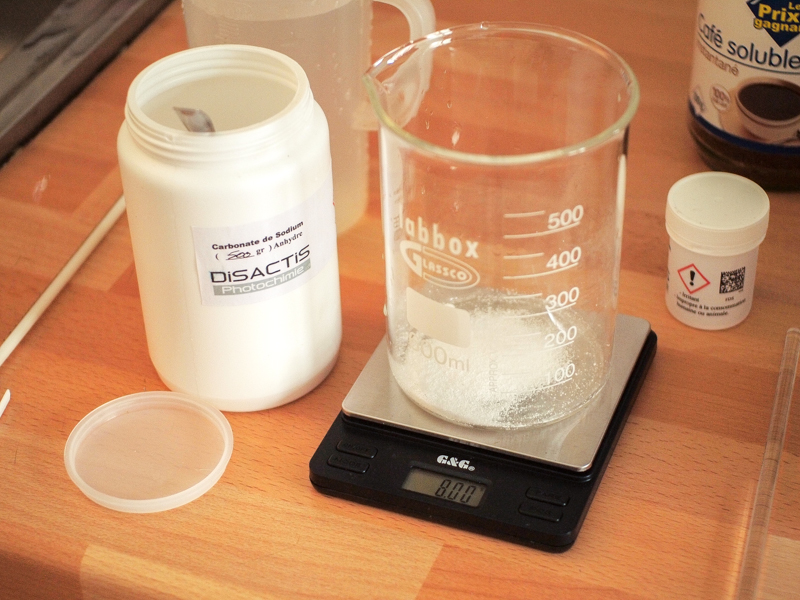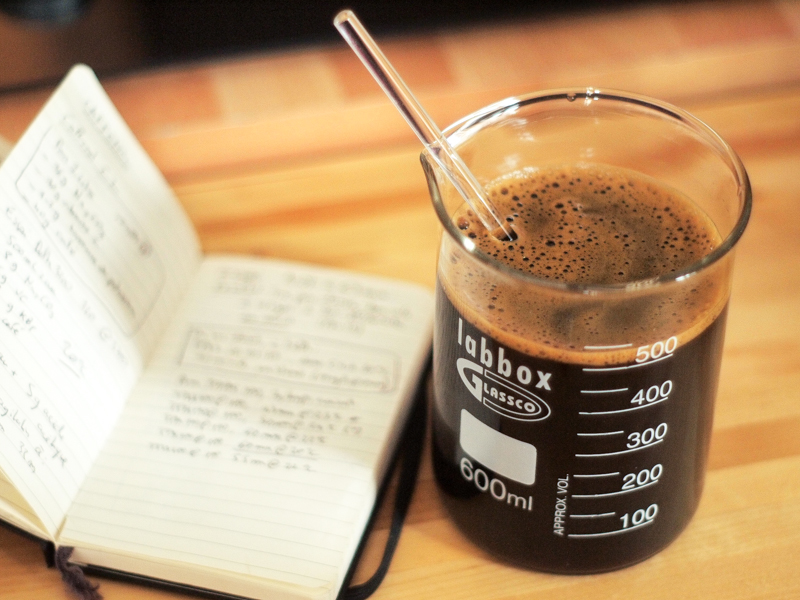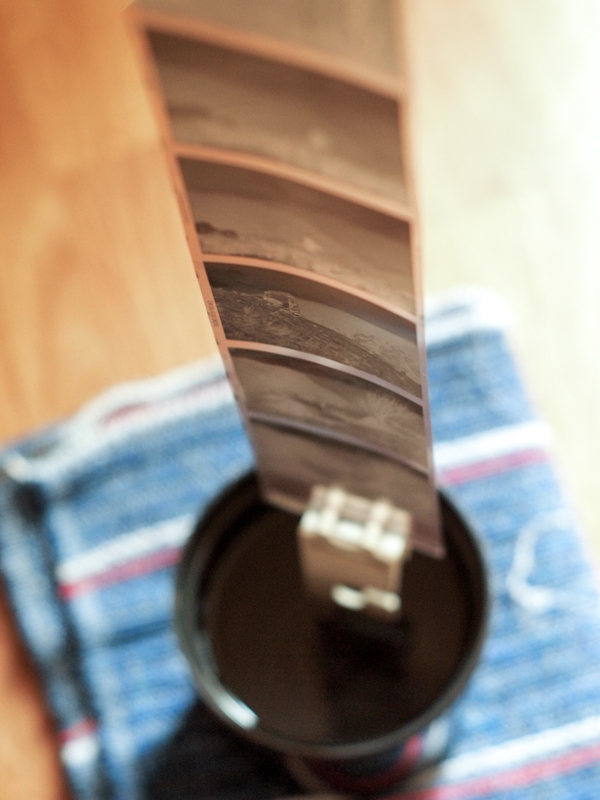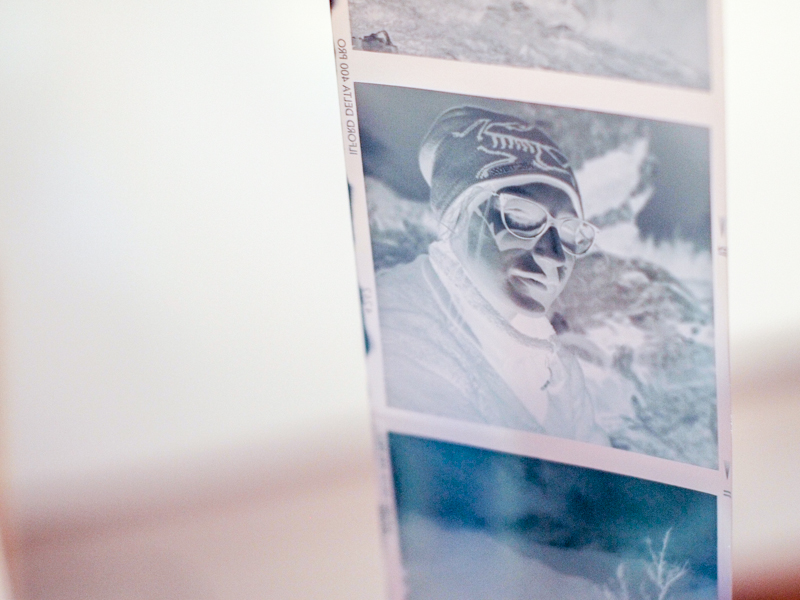
Caffenol is an homemade film developer made out from everyday household products, and mostly regular coffee. It was invented by Dr. Williams from the Rochester Institute of Technology. Technical Photography 1995 Class had to create a “non traditional” developer as an assignment. It resulted in what would become Caffenol. That was it. Around 2000, the internet adopted the formula and drastically improved it. Some pioneer websites such as Caffenol cookbook and Reinhold’s blog established rules, assisted by a very strong community (i.e. Caffenol facebook page), and proved its effectiveness by thousands of experiments.
The experiment went a lot further for some weekend handymen who created developers based on sodium carbonate, sea water, medicinal sage, wine, beet or potato peels. I do not want to see these people’s kitchens.
That said, Caffenol is a great, easy to make developer. I have not heard of anybody giving it a try and being disappointed. Hipsters will say that they chose Caffenol for its eco-friendly aspect over nasty toxic chemicals from this rotten capitalistic system. They develop their precious Lomo pictures with coffee and convince themselves they saved a seal, or a penguin. By doing that, they eventually pour the fixer containing all the silver from the film layers down the drain, which does not change the problem. Silver is not a human health concern, but is pretty bad for marine invertebrates. Pollution from the silver found in film is way more significant than from developers (by the way, YES, developers without hydroquinone do exist – XTOL uses only ascorbic acid and is as toxic as Caffenol). Anyway, Caffenol is great for the experiment and the ability to make it from scratch, that is all.

The principle is supposed to be extra easy: washing soda, instant coffee, vitamin C, water. Stir everything into a nice smooth soup, throw the roll you just shot in, fix as usual and dry. It is really simple. However, if you want to use the recipe on a regular basis, you need to have repeatable results. I, therefore invested in pure chemicals: anhydrous sodium carbonate instead of washing soda, powder ascorbic acid instead of the vitamin C tablet. Coffee contains caffeic acid, which is a strong phenol reducing agent, comparable to hydroquinone – the standard everyday off-the-shelf developer. Sodium carbonate is a basic solution that allows the caffeic acid to continue its reducing action. Vitamin C improves the image quality, and potassium bromide is a little extra to avoid non-exposed regions of the film to be “contaminated” by the reaction for long development times. That is it for the science. You will find everything you need on the websites mentioned before.
However, here are a few tips I think are important enough to be mentioned:
#1: Follow the rules
As experimental as it looks, there is some stuff to measure rather accurately and mix in the right order. For a 120 type film, Caffenol C-L (the one I regularly use) is made out of:
- 8 g sodium carbonate (washing soda)
- 5 g ascorbic acid (vitamin C)
- 1 g potassium bromide (some people use iodized salt instead)
- 20 g coffee
- 500 mL water
You will definitely need a more precise scale than your regular kitchen scale (except if you practice molecular gastronomy, then go ahead, my bad). Also, always dissolve sodium carbonate in water first, then ascorbic acid, then potassium bromide, and finally coffee. Do not be afraid of stirring like crazy, it is necessary. For development itself, I agitate the tank 10 times at 0 min, then twice at 15 min and 30 min. Define a rule and stick to it, this is the only way you can see how to improve your process.
If you live in France, chemicals can all be found on Disactis, a great website for photography related chemicals.

#2: Choose your coffee wisely
You will need the cheapest instant coffee you can find, even though it might affect your conscience buying such a terrible item. The coffee I bought attests to its purity on its label: “guaranteed 100% coffee”, like a warning. Trying to show that they actually made sure that thing was only coffee should be enough to keep you from drinking it but I am sure you will not. Robusta is supposed to contain more caffeic acid, so try to avoid 100% arabica brands.
How am I sure you will not drink it? Because the smell of that soup, once ready, is really foul, I cannot really explain why, but you should let it sit a few minutes before using it. It does nothing for the smell but helps the reaction. Hold your breath meanwhile.

#3: Experiment
Try on a few rolls, there are so many parameters that it is impossible to have the exact same time than another setup. That is also why I chose Caffenol C-L, it takes a while to develop (about an hour), but it is easier to have a error margin. If you are in a hurry, you can also check out Caffenol C-M or C-H, it should take you around 15 minutes, with a regular agitation scheme.
For comparison, here are a few developing times I tried and worked for me:
- Delta 400: 60 min @ 20°C
- Tmax 100, Delta 100: 65 min @ 20°C
- FP4+ : 70 min @ 20°C
- Delta 3200: 80 min @ 20°C
This website Filmdev is great to find the right timing for the right soup.


#4: Enjoy the results!

You think you could show me some samples of Delta 3200 in caffenol? Developer is pretty expensive so I’d like to save some money, besides making your own stuff is generally much more satisfying.
Hello Komodo! Sorry I just saw your comment. Are you still interested in some Delta 3200 in Caffenol? I might have a roll of delta that I can spare.